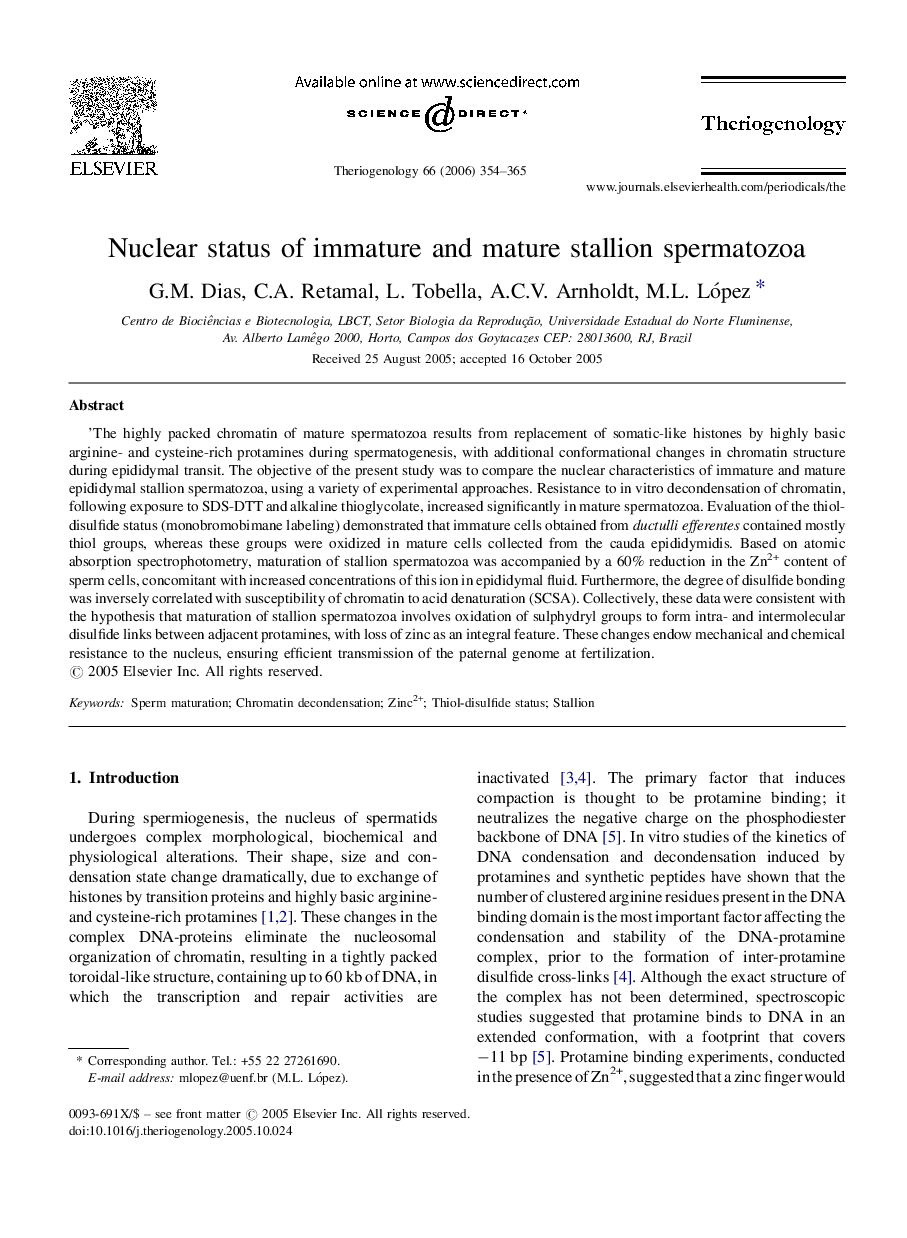| کد مقاله | کد نشریه | سال انتشار | مقاله انگلیسی | نسخه تمام متن |
|---|---|---|---|---|
| 2097087 | 1082194 | 2006 | 12 صفحه PDF | دانلود رایگان |

’The highly packed chromatin of mature spermatozoa results from replacement of somatic-like histones by highly basic arginine- and cysteine-rich protamines during spermatogenesis, with additional conformational changes in chromatin structure during epididymal transit. The objective of the present study was to compare the nuclear characteristics of immature and mature epididymal stallion spermatozoa, using a variety of experimental approaches. Resistance to in vitro decondensation of chromatin, following exposure to SDS-DTT and alkaline thioglycolate, increased significantly in mature spermatozoa. Evaluation of the thiol-disulfide status (monobromobimane labeling) demonstrated that immature cells obtained from ductulli efferentes contained mostly thiol groups, whereas these groups were oxidized in mature cells collected from the cauda epididymidis. Based on atomic absorption spectrophotometry, maturation of stallion spermatozoa was accompanied by a 60% reduction in the Zn2+ content of sperm cells, concomitant with increased concentrations of this ion in epididymal fluid. Furthermore, the degree of disulfide bonding was inversely correlated with susceptibility of chromatin to acid denaturation (SCSA). Collectively, these data were consistent with the hypothesis that maturation of stallion spermatozoa involves oxidation of sulphydryl groups to form intra- and intermolecular disulfide links between adjacent protamines, with loss of zinc as an integral feature. These changes endow mechanical and chemical resistance to the nucleus, ensuring efficient transmission of the paternal genome at fertilization.
Journal: Theriogenology - Volume 66, Issue 2, 15 July 2006, Pages 354–365